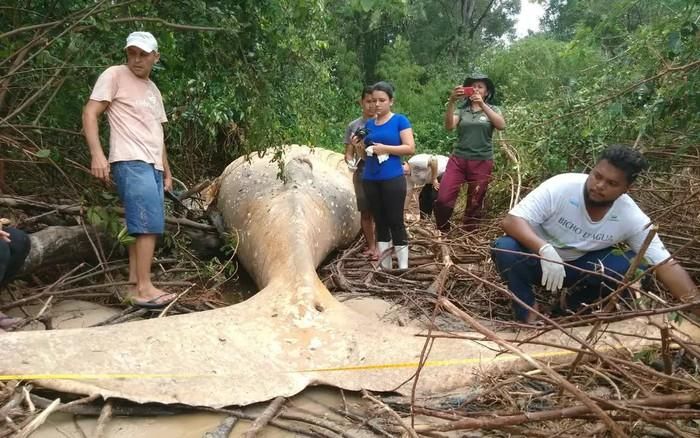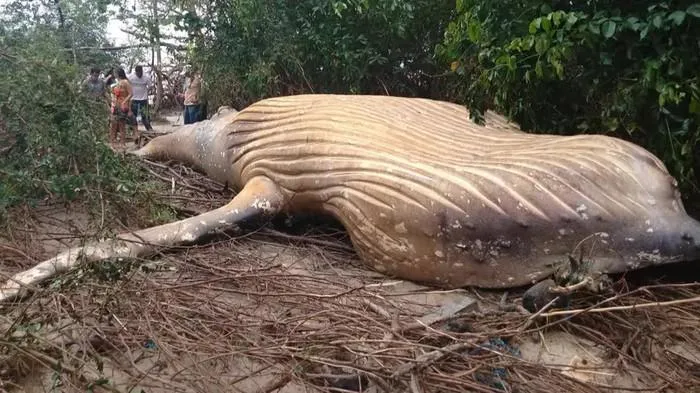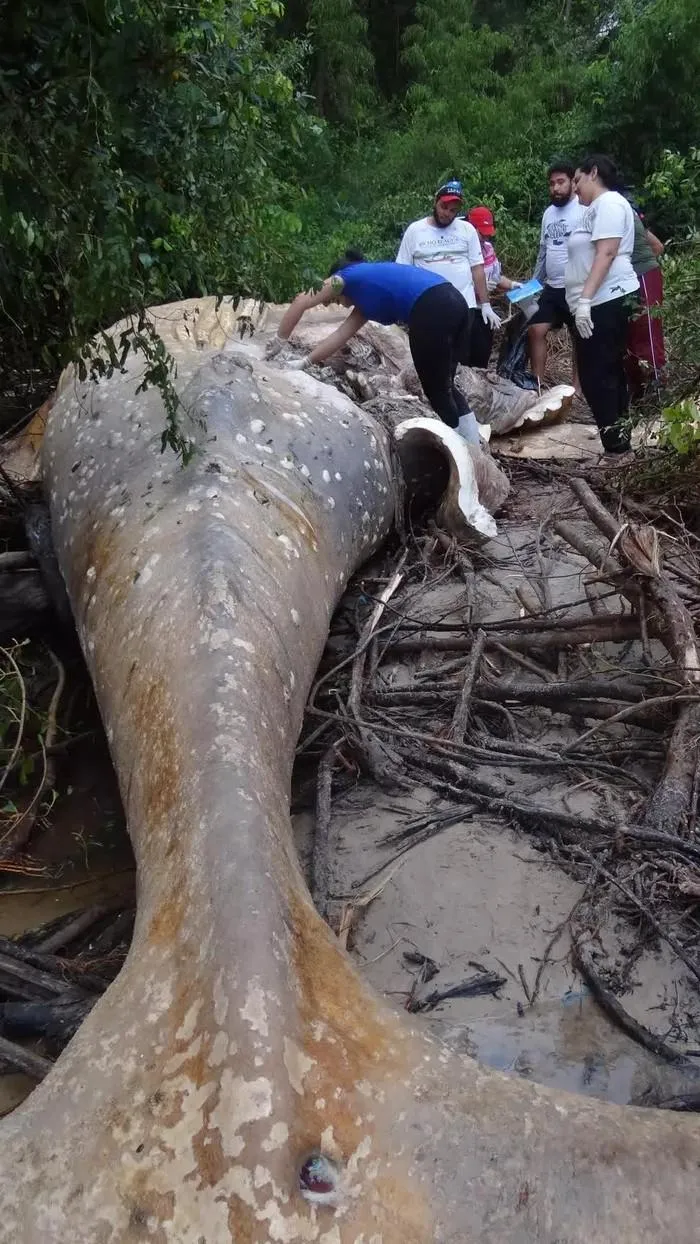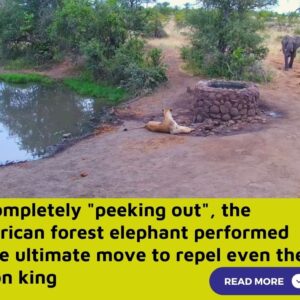The body of a humpback whale has been discovered in the Amazon rainforest – a location where no one would expect whales to appear.

It took researchers quite a while to reach this area
In February 2019, a nearly 11-meter-long whale carcass was discovered outside its natural habitat, and no one knows how the whale got here. The animal weighed about 10 tons and was found in an area 15 meters from the sea.
Although this distance does not actually seem very far, traveling here is almost impossible with a whale body of such enormous size. This area is even covered with a dense layer of low trees.

–

The humpback whale carcass was found in the forest
Many experts have come here to research and find out what is the cause of the strange phenomenon. The best guess they could make was that the creature had been swept into the forest by rough seas and high tides, then trapped by a hedge of trees.
According to the Maritime Herald , this whale may have died from eating plastic in the ocean. Most researchers believe that this creature died before it washed ashore.
The research team from Brazil’s department of environment, health and hygiene found the whale thanks to the unusual appearance of vultures – a bird of prey that often eats the remains of dead animals.
The team of 10 biologists had difficulty getting to the whale’s carcass the first time. It was not until their next trip that they succeeded in collecting samples.
In fact, humpback whales often live in the Bahia area from August to November, because this is their familiar breeding area. They then begin to migrate to Antarctica to feed. Therefore, it is extremely rare for whales to appear in a northern area during this time.
“We believe this young whale may have lost its mother or herd during the animal’s intercontinental migration cycle,” said Renata Emin, president and marine expert of Bicho D’Agua said.




